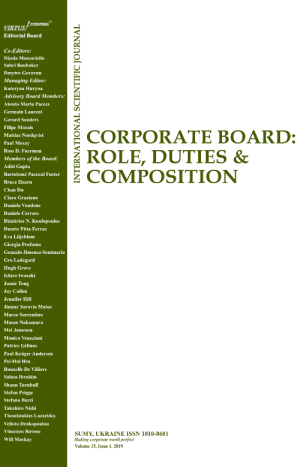
IGNORANCE IS NO EXCUSE FOR DIRECTORS MINIMIZING INFORMATION ASYMMETRY AFFECTING BOARDS
Download This ArticleAbstract
This paper looks at information asymmetry at the board level and how lack of information has played a part in undermining the power of the board of directors. Information is power, and at board level, information is essential to keep the board knowledgeable about the failures and successes of the organization that it is supposed to govern. Although lack of information has become a popular excuse for boards, the mantra could –and should –be changing to, “Ignorance is no excuse” (Mueller, 1993). This paper explores some of these information system solutions that have the aim of resolving some of the problems of information asymmetry. Furthermore, three case studies are used to explore the problem of asymmetric information at board level and the how the boards are trying to solve the problem. The focus of the discussion is to a) describe how directors experience the information asymmetry and if they find it troublesome, b) how important information is for the control and strategy role of the board and c) find out how boards can minimize the problem of asymmetric information. The research is conducted through semi-structured interviews with directors, managers and accountants. This paper offers an interesting exploration into information, or the lack of information, at board level. It describes both from a theoretical and practical viewpoint the problem of information asymmetry at board level and how companies are trying to solve this problem. It is an issue that has only been lightly touched upon in the corporate governance literature but is likely to attract more attention and research in the future.
Keywords: directors, information asymmetry, executives
How to cite this paper: Jonsson, E. I. (2006). Ignorance is no excuse for directors minimizing information asymmetry affecting boards. Corporate Board: role, duties and composition, 2(3), 16-24. https://doi.org/10.22495/cbv2i3art2



















